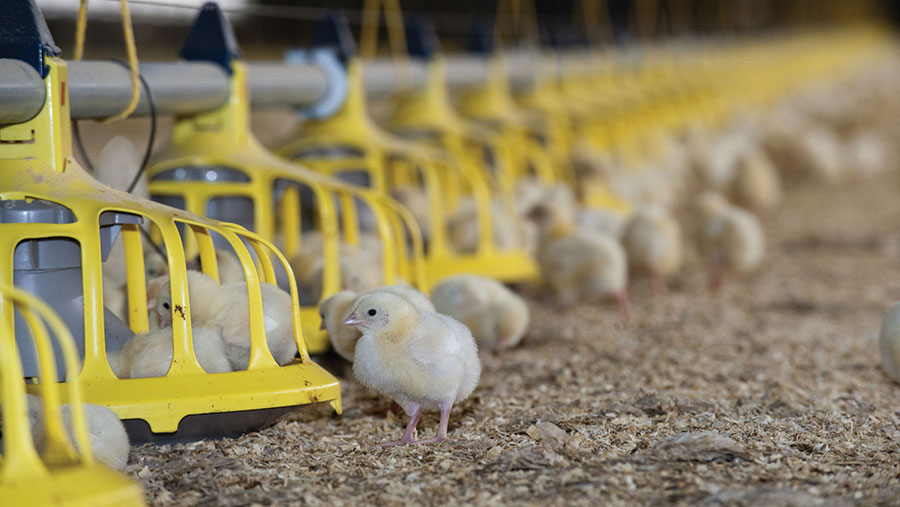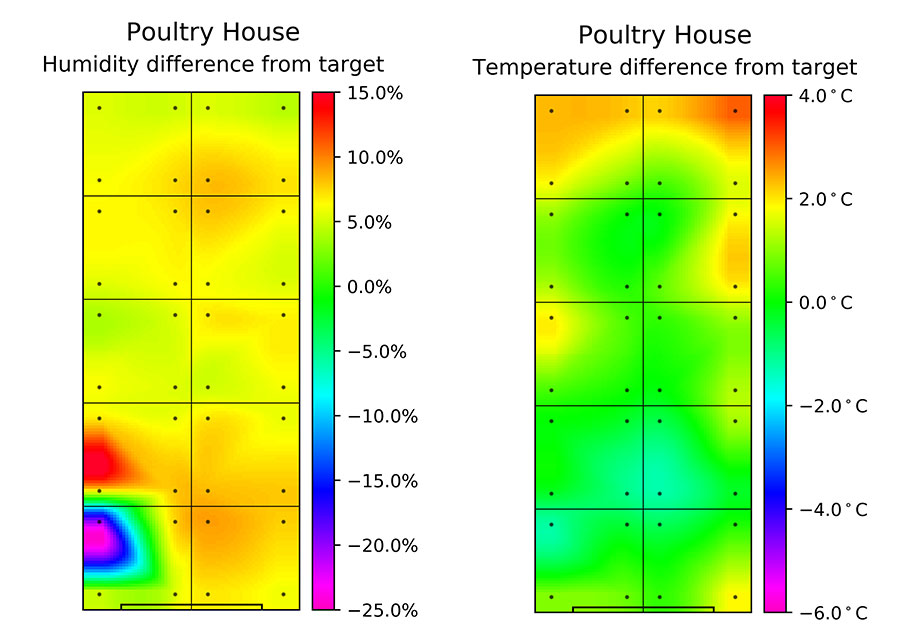How technology can help improve poultry flock uniformity
 © FLPA/Shutterstock
© FLPA/Shutterstock An uneven flock is a familiar frustration for poultry farmers. Not only does it make management harder, but it can lead to higher rejects at the processing plant if birds are outside target weight.
The difficulty is in pinpointing the exact reasons for the disparity, which could be caused by a broad range of management factors, from temperature or ventilation settings to water or feed provision.
See also: A poultrykeeper’s guide to spotting and controlling blackhead
Assessing multiple types of information to build a picture of the root cause is tricky, as data either has to be written down by the farmer or monitored through bespoke software tied to specific systems such as shed ventilation, for example.
It was this problem that sparked the idea behind Poultry Sense, a monitoring system developed by a group of vets.
It uses a network of sensors to collect data within the shed, which can then be interpreted to assess the effect each variation has on flock performance.
Real-time flock management
The breadth of information it collects from minute to minute can help farmers act quickly to tackle the multiple causes of uneven flocks.
“The real-time accessibility of the data means farmers can be hands-on rather than having to act retrospectively,” says Alan Beynon, Poultry Sense managing director.
Information can be integrated off-farm to cross-reference or benchmark against other data. Potentially, it could play a role in disease management and predicting the cause of disease outbreaks.
The system uses the “internet of things” to connect low-cost sensors, which automatically monitor animal weight, feed intake, water consumption and environmental factors.
This data is collated via an online hub and provides detailed and accessible analytics for farmers.
What is the internet of things?
The internet of things (IoT) is a network of everyday devices – from mobile phones to lightbulbs and thermostats – that can collect and communicate data over a wireless network.
It is possible to turn anything with a chip into an IoT device and, through the use of sensors, allow different objects to monitor and share real-time information without the need for human intervention.
The ability to remotely monitor sheds provides an extra layer of biosecurity if a farm needs to be locked down.
“Vets can see a lot of data on the flock off-site, monitor what’s going on in the sheds, and feed back to the farmer without having to physically visit,” says Mr Beynon.
What trials have achieved
Poultry Sense is currently being trialled on five poultry farms, across 18 different sheds, and should be commercially available by August this year, says Mr Beynon.
One farmer successfully used the system to identify and correct a significant disparity in water intake across one of his sheds.
“From the sensor data, we found the water intake in the middle water line of one shed was 54% higher than from the outer lines,” says Mr Beynon.
“This was interesting from a veterinary perspective, because vaccines are administered through water, and the weights of the birds was different in different parts of the house – which related to the water intake.”
As a result of these findings, the producer adjusted lighting parameters, ventilation and chick placement, so that chicks are now more evenly spread.
“This has adjusted the differentiation in water intake to 10% higher in the central line and the flock is much more even now.”
“The system has been on farm for almost 12 months now, meaning we can look back over four cycles and see what happened in houses last winter. The ability to use this data is really exciting.”
At the end of a flock, a detailed report is generated, and a 10-point plan is created for producers to see potential areas of improvement quickly.
Poultry Sense Q&A
How does it work?
Producers install as many sensors in their sheds as they require. The battery-operated units upload real-time data to a cloud-based hub via a local network that wirelessly connects them to the internet.
What data can be viewed?
Collected data is automatically converted into colour-coded graphs so the farmer can identify different management areas to improve without the need to input any figures, apart from mortality.

Farmers can access the data by logging into the portal from a phone, computer or tablet connected to the internet.
Here, they can see live graphs or raw data depicting what is going on in their sheds, and compare sets of data – whether that’s water consumption and lighting, or temperature and weight.
Whose data is it?
The data belongs solely to the farmer, who can choose to share it to enable vets, nutritionists and others to help with assessments and management decisions – which can all be done remotely.
The producer can also close their account and delete their data if they want to.
But huge advantages come from sharing data. It allows producers to build a broader picture of flock welfare to help with benchmarking and identifying trends so they can make the correct management changes.
How much will it cost?
As the product is not yet ready for commercial release, pricing has not been set. The system will be sold on a module basis, so you can select which sensors you want to suit your budget.
Software will be billed as a subscription service separate to the upfront installation costs.
